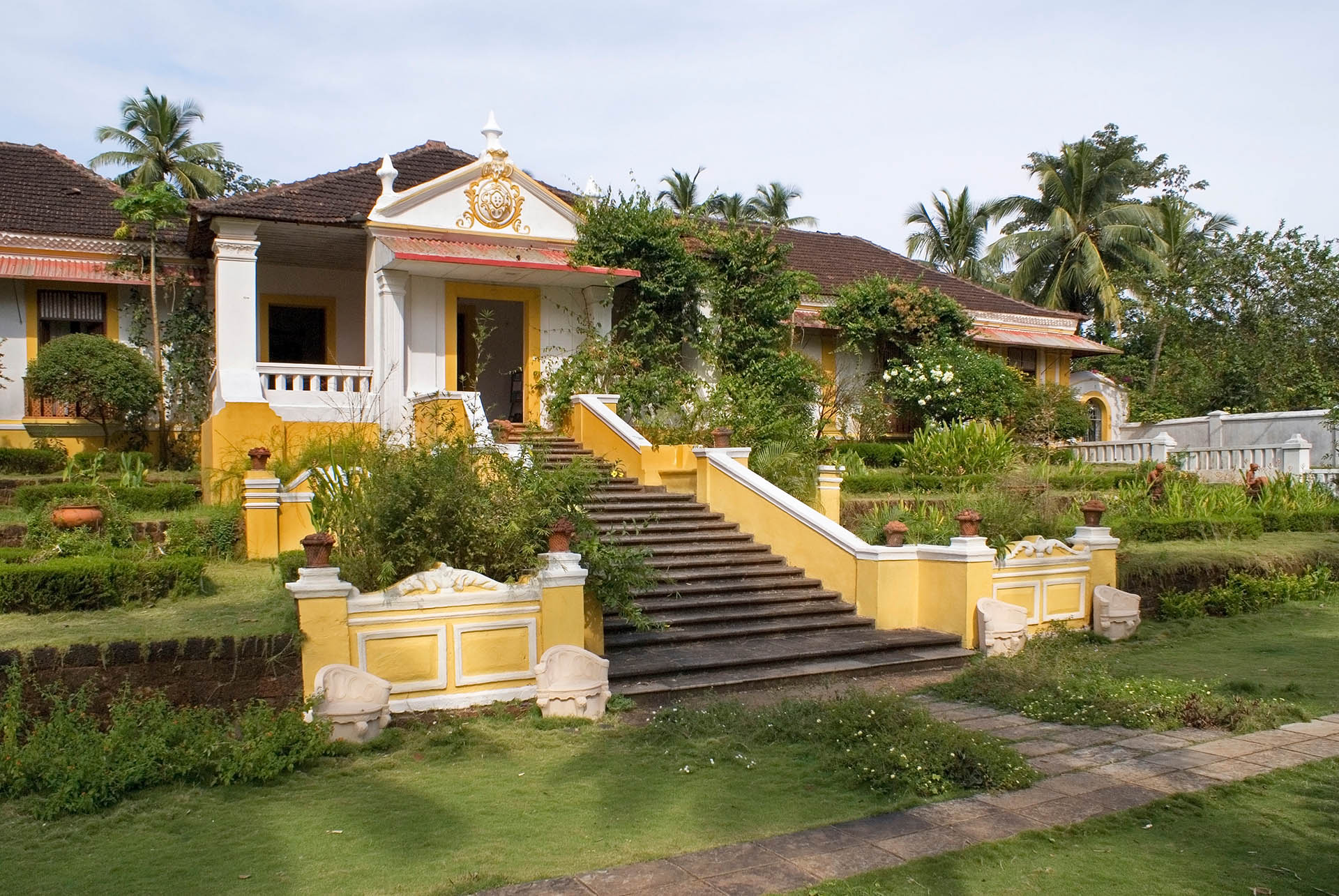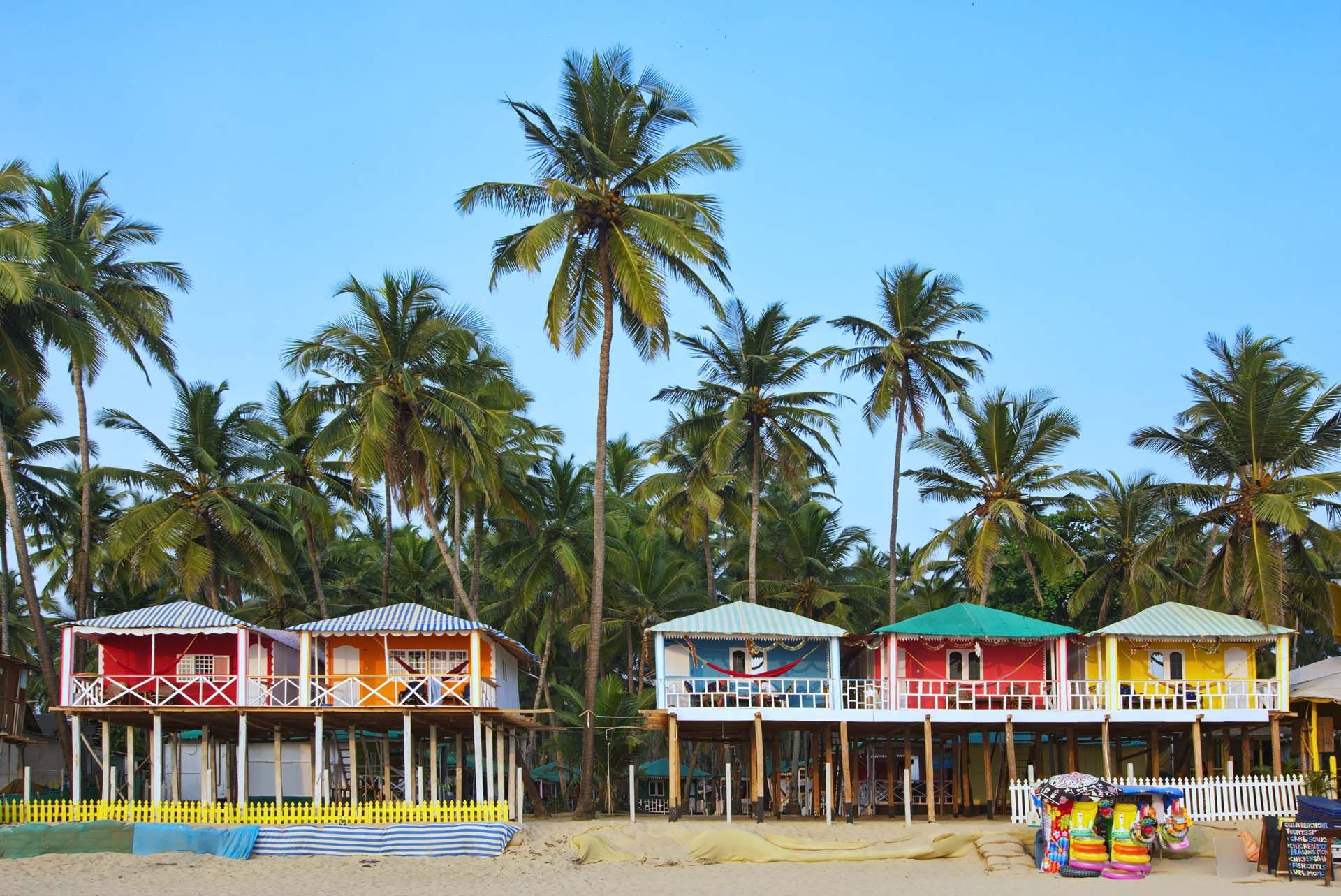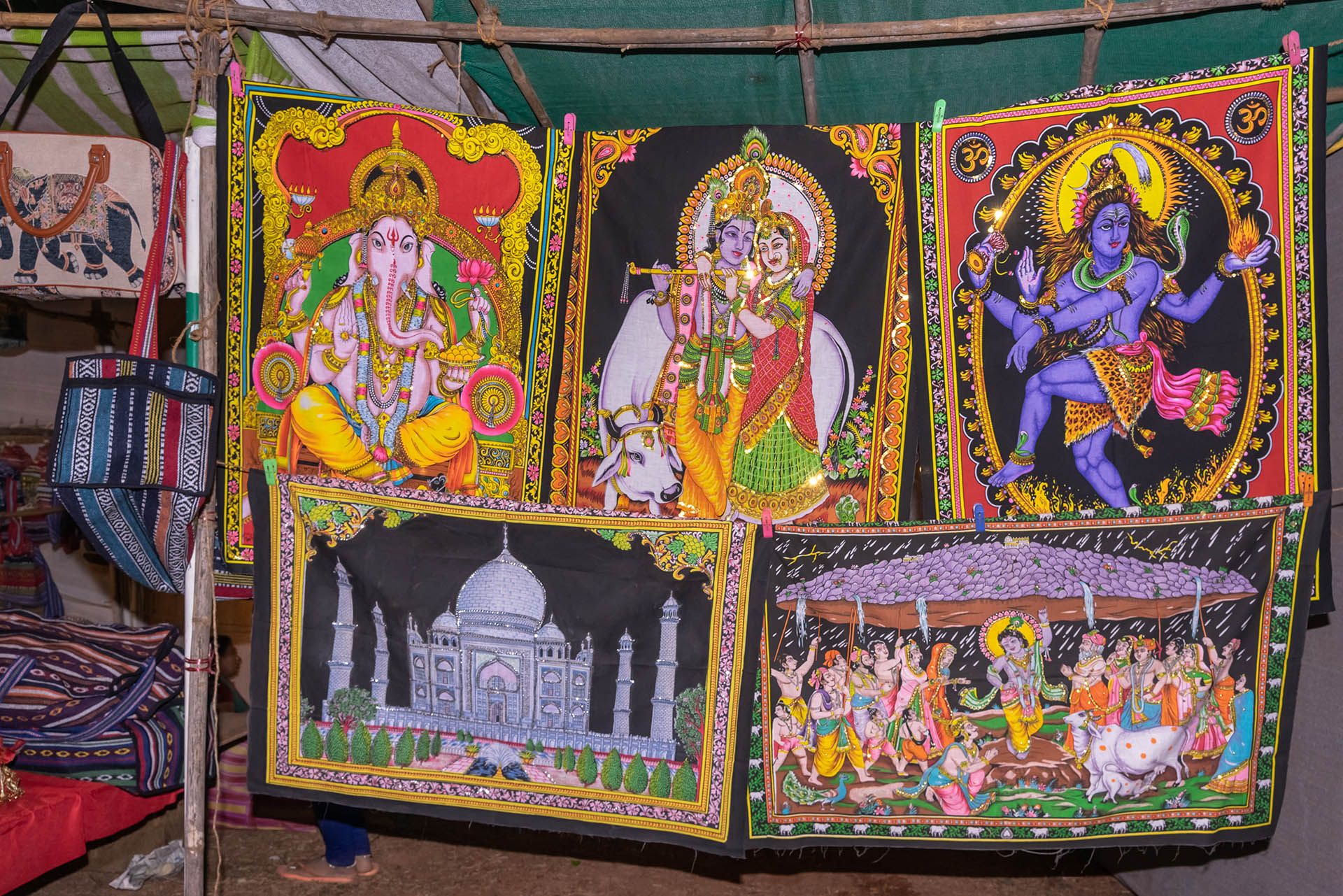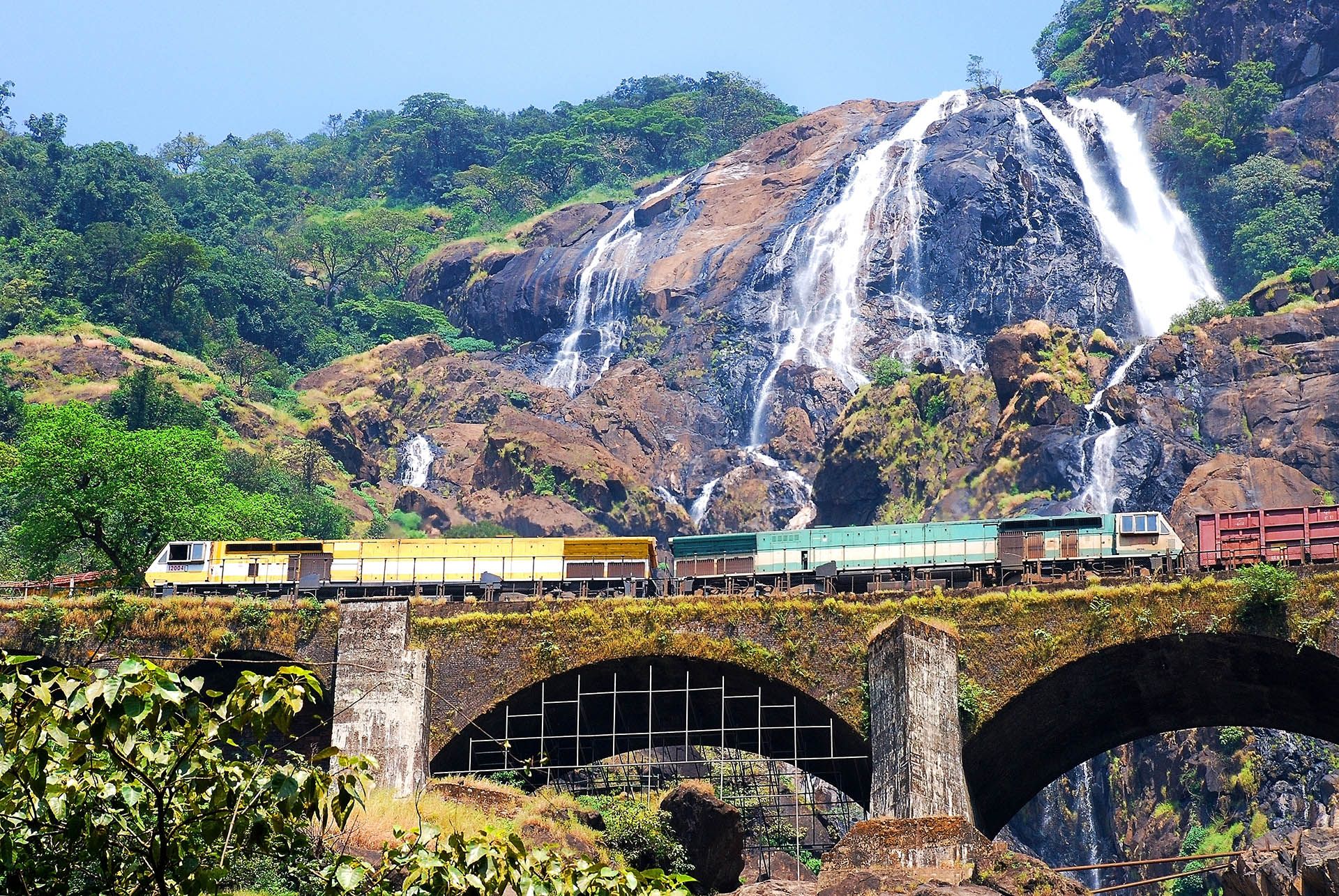Planning your own trip? Prepare for your trip
Use Rough Guides' trusted partners for great rates
Book your individual trip, stress-free with local travel experts
The former Portuguese enclave of Goa, midway down India’s southwest coast, has been a holiday destination since colonial times, when British troops used to travel here from across the country for a spot of “R&R”. Back then, the three Bs – bars, brothels and booze – were the big attractions. Now it’s the golden, palm-fringed beaches spread along the state’s 105 km coastline that pull in the tourists – around two million of them each winter. Cheap air travel has made it a major package tour destination for Europeans, and there has been a dramatic rise in domestic visitors in recent years.
Luckily, in spite of the increasing chaos of Goa’s main resorts, it’s still possible to find the odd quiet corner if you’re prepared to explore.
The linchpin for a vast trade network for more than 450 years, Goa was Portugal’s first toehold in Asia. The first hippie travellers came to the region on the old overland trail shortly after its “Liberation” in 1961.
They found a way of life little changed in centuries: the coastal settlements were little more than fishing- and coconut-cultivation villages.
Relieved to have found somewhere culturally undemanding to party, the travellers got stoned, watched the mesmeric sunsets over the Arabian Sea and danced like lunatics on full-moon nights. The rave scene reached its peak in the 1990s, with “Goa trance” becoming a fully-fledged musical genre.
Since then, the state has been at pains to shake off its reputation as a druggy drop-out zone, and its beaches have grown in popularity year after year.
Around two dozen stretches of soft white sand indent the region’s coast, from spectacular 25km sweeps to secluded palm-backed coves. The level of development behind them varies a great deal; while some are lined by swanky Western-style resorts, others only have palm-leaf shacks.
Planning a trip to India? Perhaps our local experts in India can help you!

Scenic yard and old houses in historical town of Old Goa in India © Shutterstock
From the Saturday Night Market in Arpora to glorious golden beaches, here are the best things to do in Goa.
Just 10 km from Panjim, and at one time a byword for oriental splendour, Portugal’s former capital in India, Old Goa, was virtually abandoned following malaria and cholera epidemics from the seventeenth century onwards.
Today, despite its UNESCO World Heritage Site status, you need considerable imagination to picture the once great city at its zenith, when it boasted a population of several hundred thousand.
The maze of twisting streets, piazzas and ochre-washed villas has vanished, and all that remains is a score of cream-painted churches and convents.
Foremost among the surviving monuments is the tomb of St Francis Xavier, the legendary sixteenth-century missionary, whose desiccated remains are enshrined in the Basilica of Bom Jesus – the object of veneration for Catholics from across Asia and beyond.
One of the few genuinely positive improvements to the north Goa resort strip over the last fifteen years has been the Saturday Night Market, held on a plot inland at Arpora, midway between Baga and Anjuna.
Originally the brainchild of an expat German called Ingo, it’s run with great efficiency and a sense of fun.
Although far more commercial than its predecessor in Anjuna, many old Goa hands regard this as far truer to the original spirit of the flea market.
A significant proportion of the stalls are taken up by foreigners selling their own stuff, from reproduction of Indian pop art to antique photos, the latest trance party gear, stunning antique and coconut-shell jewellery and techno DJ demos.
There’s also a mouth-watering array of ethnic food and a stage featuring live music from around 7pm until 3am, when the market winds up, as well as a couple of trendy bars with live music or DJs.
Goa’s famous tourist bazaar is the place to pick up the latest party gear, shop for souvenirs and watch the crowds go by. The biggest crowds gather on Wednesdays after Anjuna’s flea market, held in the coconut plantation behind the southern end of the beach, just north of Curlie’s.
This is the place to indulge in a spot of souvenir shopping. Pitches are rented out by the metre, drugs are banned and the approach roads to the village are choked all day with air-conditioned buses and Maruti taxis ferrying in tourists from resorts further down the coast.
If you make it down to Anjuna, make sure to explore it's beautiful beach too.

Anjuna Beach in Goa © Shutterstock
Pretty Aswem, the next settlement north of Morjim, could hardly be described as a proper resort. Officially inside the Coastal Protection Zone, its beachfront holds few permanent buildings and most of the accommodation is in temporary structures.
Yet, over the past few seasons, the strip of soft white sand nestled beneath its mand of slender palms has become the place to see and be seen by India’s hip set – Mumbai millionaires, Bollywood A-listers and international celebs are regularly spotted in the swanky resorts and clubs in the dunes.
A more down-to-earth scene holds sway around the headland to the south, which is family-friendly, with lots of children playing on the beach. How long this stretch can hold out against the rising tide of bling, however, is anyone’s guess.
For now, it's the hippest spot in North Goa to swim, fine-dine and dance under the stars, with the stars.
This superb colonial-era palacio stands at Quepem, a thirty-minute drive southeast of Margao on the fringes of the state’s iron-ore belt.
In 1787, a high-ranking member of the Portuguese clergy, Father José Paulo de Almeida, built a country house in the town.
Known as the Palacio do Deão, it grew to become one of the grandest in the colony, and later served as a retreat for its viceroys. The palacio was recently restored to its former glory, and what you see today is a faithful approximation of how the house would have looked in José Paulo’s day.
The engaging guided tour lasts around half an hour.

Palacio do Deao near Quepem. Goa. India © Shutterstock
Tuck into a fresh kingfish, lobster or tandoori pomfret, washed down with an ice-cold beer. Benaulim’s proximity to Margao market, along with the presence of a large Christian fishing community, means its restaurants serve some of the tastiest, most competitively priced seafood in Goa.
The largest and busiest shacks flank the beachfront area, where Johncy’s catches most of the passing custom. However, you’ll find better food at lower prices at places further along the beach, which seem to change chefs annually; wander by and see who has the most customers
Nowhere else in peninsular India conforms so obediently to the archetypal image of a paradise beach as Palolem, 35km south of Margao.
Lined with a swaying curtain of coconut palms, the bay forms a perfect curve of golden sand, arcing north from a giant pile of boulders to a spur of the Sahyadri Hills, which tapers into the sea draped in thick forest.
However, it has become something of a paradise lost over the past decade. It’s now the most popular resort in Goa among independent foreign travellers, and is deluged from late November. Visitor numbers become positively overwhelming in peak season.
Basically, Palolem in full swing is the kind of place you’ll either love at first sight or want to flee from as quickly as possible. If you’re in the latter category, try smaller, less frequented Patnem beach, a short walk south around the headland.
Rough Guides Tip: looking for more beaches? Make sure to read our article about the best beaches in Goa.

Colorful bungalows on the tropical beach of Palolem, South Goa, India © Dan Baciu/Shutterstock
The Portuguese viceroy Redondo (1561–64) commissioned the Sé, or St Catherine’s Cathedral, southwest of St Cajetan’s, to be “a grandiose church worthy of the wealth, power and fame of the Portuguese who dominated the seas from the Atlantic to the Pacific”.
Today it stands larger than any church in Portugal, although it was beset by problems, not least a lack of funds and the motherland’s temporary loss of independence to Spain. It took eighty years to build and was not consecrated until 1640.
On the Tuscan-style exterior, the one surviving tower houses the Golden Bell, cast in Cuncolim (south Goa) in the seventeenth century.
The scale and opulence of the Corinthian-style interior are overwhelming; no fewer than fifteen altars are arranged around the walls, among them one featuring a Miraculous Cross, said to heal the sick.
Measuring a mighty 600m from head to foot, the famous Dudhsagar waterfalls, on the Goa–Karnataka border, are some of the highest in India, and a spectacular enough sight to entice a steady stream of visitors from the coast into the rugged Western Ghats.
The Konkani name for the falls, which literally translated means “sea of milk”, derives from clouds of foam kicked up at the bottom when the water levels are at their highest.
Overlooking a steep, crescent-shaped head of a valley carpeted with pristine tropical forest, Dudhsagar is set amid impressive scenery that is only accessible on foot or by jeep.
The best time to visit is immediately after the monsoons, from October until mid-December, when water levels are highest, although the falls flow well into April.
From the far side of the creek bounding the edge of Aswem, a magnificent and largely empty beach stretches north towards Arambol – the last unspoiled stretch of the north Goan coast.
Whether or not Mandrem can continue to hold out against the developers remains to be seen, but for the time being, nature still has the upper hand here.
Olive ridley marine turtles nest on the quietest patches, and you’re more than likely to catch a glimpse of one of the white-bellied fish eagles that live in the casuarina trees – their last stronghold in the north of Goa.

Resort huts on Mandrem beach in north Goa, India © saiko3p/Shutterstock
When embarking on an adventurous journey through the vibrant beaches and captivating landscapes of Goa, it's essential to prioritize your safety. Some tips.
Be very careful where you swim in Goa. Many places are subject to vicious currents (even in relatively shallow water) and during the season at least one tourist a week drowns here – often after they have consumed drugs or alcohol. It’s safest to stick to the beaches with lifeguards and flags indicating the safe areas to swim. Swimming anywhere during the monsoon would be suicidal.
While the vast majority of harassment of female tourists in Goa is relatively harmless (though unacceptable) – the surreptitious use of cellphones to take photos of scantily clad women on beaches, for example (report them to the beach police and they’ll be forced to delete the pictures), or unwanted attempts at conversation by large groups of men – there have been more serious cases of sexual crimes.
Women should avoid walking alone in remote places (or on the beach), especially after dark, and never accept drinks from strangers. Read more about traveller safety in Goa and the rest of India.
Lots of visitors come to Goa expecting to be able to party on the beach every night, and are dismayed when most places to dance turn out to be mainstream clubs they probably wouldn’t look twice at back home. The truth is that the full-on, elbows-in-the-air beach party of old, when tens of thousands of people would space out to huge techno sound systems under neon-painted palm trees, is – for now – pretty much a thing of the past in Goa.
Goa’s coastal villages saw their first big parties back in the 1960s with the influx of hippies to Calangute and Baga. Much to the amazement of the locals, the preferred pastime of these wannabe sadhus was to cavort naked on the sands together on full-moon nights, amid a haze of chillum smoke and loud rock music.
At first the villagers took little notice of these bizarre gatherings, but with each season the scene became better established, and by the late 1970s the Christmas and New Year parties, in particular, had become huge events, attracting travellers from all over the country.

St. Catherine Cathedral (1640) in Goa © Shutterstock
Whether you're seeking pristine beaches, bustling nightlife, or a serene retreat, this guide will highlight the best places to stay in Goa to make your experience unforgettable.
Fontainhas are the best places to stay, while more modern and expensive hotels cluster in the area around 18th of June Rd. F
Candolim is charter-holiday land, so accommodation tends to be expensive for most of the season. That said, if bookings are down you can find some great bargains here.
East of the fort is a genuinely nice place to stay.
In spite of the encroaching mayhem, plenty of travellers get hooked on Calangute’s mix of the market town and beach resort, returning year after year to stay in little family guesthouses in the fishing waddo. Nowhere is far from the shore, but sea views are a rarity.
Accommodation is harder to find in Baga, as even rooms in smaller guesthouses tend to be booked up well before the season gets underway. The majority of family-run places lie around the north end of the beach, where nights have been a lot more peaceful since Goa’s premier club, Tito’s, acquired soundproofing.
Chapora specializes in long-term rentals of rooms and houses (by the week or month) to repeat visitors; these economical options can be found by asking around the village.
Because of the unwelcoming vibe, the hotels and guesthouses immediately behind the beach, in the dunes and along the beachfront road, are best avoided. One really nice option, however, is Jardin d’Ulysse. It stands on the riverfront south of the village.

The Saturday Night Market in Arpora © Shutterstock
With accommodation either ultrabasic or staggeringly expensive, most visitors ride up to Aswem for the day on scooters and decamp after sunset. A handful of places, however, offer reasonable value.
Most of the village’s accommodation is tucked away inland at Junasa Waddo, where a growing number of small guesthouses, hotels and yoga retreats cater to a mixed, peace-and-quiet-loving crowd – costs are generally higher than at Arambol, however.
The cost of accommodation in Arambol has risen sharply over the past few seasons, reflecting the village’s popularity with more affluent hippies, but it’s still nearly all pitched at budget travellers: no-frills, Goan-run guesthouses and expat-inspired hippie-chic predominate here.
Aside from the unsightly time-share complexes and fi ve-stars that loom in the fields around the village, most of Benaulim’s accommodation consists of small budget guesthouses, scattered around the lanes 1km or so back from the beach.
Agonda gets packed in peak season, and over Christmas and New Year you’ll be lucky to find a bed anywhere on spec. Tariffs rocket by fifty percent or more at this time, but after Jan 15 settle back down again and remain on a par with those in Patnem and Palolem.
Except for the upscale camps (which require payment in advance online) few places accept advance bookings so you’ll probably have to plod around to find somewhere that suits, or else phone ahead from the comfort of a café table (though note that mobile coverage tends to be patchy hereabouts).
The local municipality’s strict enforcement of a rule banning new concrete construction in Palolem (it went so far as to bulldoze without warning the entire resort a few years back) has ensured that most of the village’s accommodation consists of simple palm-leaf huts.

South Goa bungalows, Palolem © Dan Baciu/Shutterstock
Navigating the beautiful region of Goa is a breeze with its well-connected transportation system. Whether you prefer exploring by road, water, or air, this guide will provide you with valuable information on how to get around Goa,
Although often crowded, local buses can get you most places in Goa.
Most foreign visitors travel around Goa in white or yellow-and-black Maruti van taxis or the slightly cheaper auto-rickshaw. Fares are often posted at ranks – you should always clearly settle the fare before you start your journey.
If you’re not weighed down with luggage, motorcycle taxis – known throughout Goa as “pilots” – offer a faster alternative and generally cost less than half the taxi rate.
Just remember that with motorcycle taxis there are old pilots and there are bold pilots, but no old, bold pilots – it’s always best to choose a more mature driver (as well as haggle hard on the rate).
A cheaper alternative is to rent a bicycle (gearless, Indian-madecycles) which are on offer in all the resorts.
For a well-rounded trip, it is recommended to spend a minimum of 4-5 days in Goa. This timeframe allows you to explore different areas of the region, relax on the beaches, engage in water activities, visit popular landmarks like Fort Aguada and Old Goa, and immerse yourself in the unique blend of Indian and Portuguese cultures that Goa is known for.
However, if you have specific interests, such as partying and enjoying the nightlife scene, you might consider extending your stay to fully experience Goa's vibrant clubs and beach parties. On the other hand, if you prefer a more relaxed and tranquil vacation, a shorter duration may be sufficient to unwind on the beaches and indulge in leisurely activities.

Dudhsagar waterfall in Goa, India © Shutterstock
The best time to come to Goa is during the dry, relatively cool winter months between late November and mid-March. At other times, either the sun is too hot for comfort, or the humidity, clouds and rain make life miserable.
During peak season, from mid-December to the end of January, the weather is perfect, with temperatures rarely nudging above 32°C. Finding a room or a house to rent at that time, however – particularly over Christmas and New Year when tariffs double, or triple – can be a real hassle.
Find out more about the best time to visit India.
Whether you're a backpacker seeking adventure or a beach lover longing for relaxation, this guide will provide you with valuable insights on various transportation options to help you embark on your journey to Goa.
A couple of dozen flights shuttle between Mumbai and Goa’s Dabolim Airport daily.
The fastest and most convenient way to travel along the coast between Goa and Gokarna is on the Konkan Railway. Seven or so more trains run daily on the Konkan Railway from Mumbai.
For travellers, the most stress-free and economical way to travel between Goa and Hosapete, the jumping-off place for Hampi, is the Vasco–Howrah Express.
A fleet of night buses covers the 500 km between Goa and Mumbai – a terrible 16hr journey, best avoided.
The bus journey to/from Hampi is no cheaper than the train (sleeper class) and is far more gruelling. Two or three clapped-out government services leave Panjim’s Kadamba stand (platform #9) each morning for Hosapete.
Find out the best ways to get to India.
Discover India's most captivating stories
Use Rough Guides' trusted partners for great rates
written by
Andy Turner
Discover India – Your go-to guide for travel tips and inspiration.
Discover India – Your travel guide.